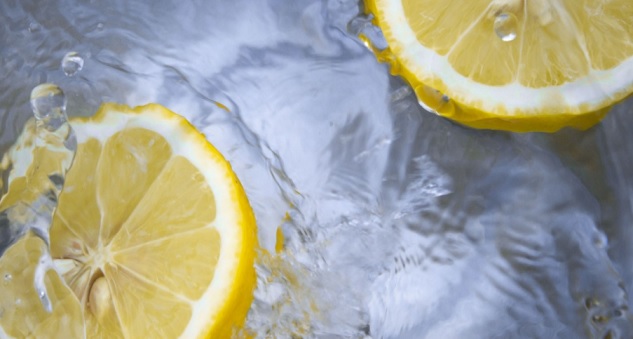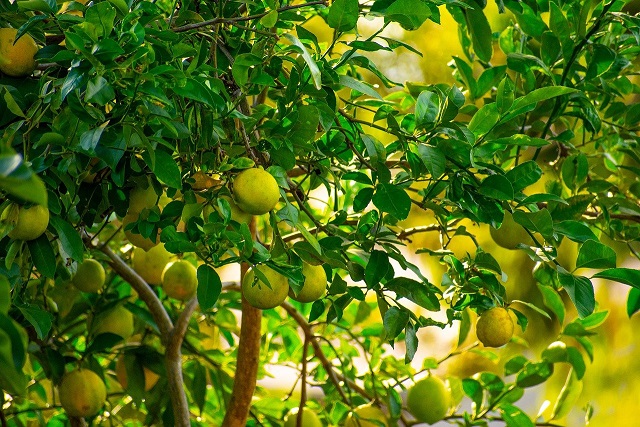Cultivation of Lime and Lemon (Kagzi ) for Good Income Returns
Cultivation of Lime and Lemon ( Kagzi)
|
Lime |
Lemon |
|
1) The lime (Citrus aurantifolia Swinale) is typically round green in colour 3- 6 cms. in diameter (1.2 to 2.4 inch) 2) it is a rich source of vitamin ‘C’ and contains acidic acid juicy vessels. 3) They can be grown around the year. 4) Lime is sour in taste often uses in beverages and in flavoring to the fruit |
1) Lemon (Citrus limon (L.) Burm.f ) is typically yellow in color 2-4 cms in diameter. 2) it is a rich source of citric acid 5 – 6% with a pH of around 2.2. 3) Lemon is primarily used for culinary and cleaning purposes due to its distinctive sour and taste 4) it is also used in making drinks and foods such as lemonade and lemon meringue pie. |
Health Benefits of Lime and Lemon ;
1)Both Lime – Lemon are rich sources of vitamin ‘C’ and are strong antioxidants that protect the cells from damage.
2) Lemons and limes both contain flavonoids. Flavonoids are phytochemicals that possess several health benefits, such as for diseases of heart and metabolic disorders.
3) As far as the nutritional benefits of lemons and limes are concerned they possess the same benefits equally. Although lemons have slightly more edge in some vitamins and minerals, the difference between the two is too small to have any effect.
4) Due to presence of the high acidity, these citrus fruits are also considered ineffective in killing bacteria. Because of these reasons, a wide range of citrus-based cleaning products is available in the markets right from bleaches to surface cleaners.
1) Lemon or lime can be grown on a variety of soils from sandy loam (alluvial) of North India to deep clay loam (lateritic) soil of the North-Eastern and Deccan Plateau regions of the country.
5) A high concentration of sodium bicarbonate molecule in the root feeder zone adversely affects its growth
Important Varieties of Lime and Lemon Crop ;
1) There are no established varieties of Sour lime or acid lime. It is popularly known as Kagzi lime in our country. Its fruits are of two types — one is oval and another is round fruit.
5) Malta and Nepali oblong are the commonest varieties of lemon in south India.
1) Lemon and lime both can be propagated by seeds and vegetative means but mainly these are propagated by vegetative means only.
5) Acid lime is generally multiplied by seeds. Because of the polyembryonic nature of the seed, seedling plants resemble the parent plant and are resistant to Viral infections. It can also be multiplied vegetatively by air layering. Similarly, lemons are also multiplied by seeds and air-layering
Planting of Lime and Lemon;
1) The planting time is July-September as well as February-March. However, rainy-season planting is preferred.
Irrigation Requirement in Lime or Lemon Crop;
1) In the initial years of growth, irrigation is required at every critical stage of the plants it further reduces the flower drop and increases the fruit size
Manuring and Fertilizers in Lime or Lemon Crops;
The manuring and fertilizers should be done 3 times in a year it should be done in the month of February, June, and September The recommended doses are –
| Age of Plant |
FYM
Kg/Plant
|
N
Gms/Plant
|
P
Gms/Plant
|
K
Gms /Plant |
| I year | 10 | 180 | 150 | 100 |
| 2 year | 20 | 360 | 300 | 200 |
| 3 year | 30 | 540 | 450 | 300 |
| 4 year | 40 | 750 | 600 | 400 |
| 5 year & Above | 50 | 900 | 750 | 500 |
Intercropping is advisable initially for 3 to 4 years of the crop. a leguminous crops like cowpeas, soybeans, french beans, peas, groundnuts, and gram can be grown as intercrops. The vegetable crops like brinjal, cauliflower, chilies, onion, and guar can also be grown depending upon the agroclimatic zone of the area.
Pest and Disease Management in Lime and Lemon ;
A) Pest Management ;
|
Major Pest |
Control |
|
Leaf miner |
Foliar sprays either with quinalphos 1.25 ml or fenvalerate 0.5 ml or monocrotophos 1.0 ml/litre of water at weekly intervals on new flush as soon as an infestation is noticed. |
|
Citrus black fly and whitefly |
One spray against adults and two at 50% egg hatching stage (I half of April & Dec. and II fortnight of July) at 15 days interval either with acephate 1.25 g or quinalphos 1.5 ml or imidacloprid 0.5 ml/ litre of water |
|
Citrus psylla |
Foliar spray either with quinalphos 1.0 ml or acephate 1.0 g or monocrotophos 0.5 ml/liter of water at bud burst stage or as and when the infestation is noticed during Feb, – Mar., Jun., – Jul. & Oct, – Nov. |
|
Citrus thrips |
Foliar spray either with dimethoate 1.5 ml or monocrotophos 1 ml/litre of water at bud burst stage and berry size fruits. |
|
Scale insects |
Spraying of parathion (0.03%) emulsion, dimethoate 150 ml and 250 ml kerosene oil in 100 litre of water or malathion @ 0.1 % or carbaryl @ 0.05% plus oil 1 %. |
|
Trunk borer |
Swabbing of the tunnel either with dichlorvos (0.1%) or carbaryl (1%) or monocrotophos (0.02%) kills the grub effectively. |
|
Bark eating caterpillar |
Plugging of larval tunnels with a cotton wad soaked either in dichlorvos (0.1%) or carbaryl (1%) or monocrotophos (0.01%) effectively checks the pest. |
B) Disease Management ;
|
Major Diseases |
Control |
|
Phytophthora Gummosis |
Scraping of the affected area and application of Bordeaux paste or copper oxifluoride paste or ridomil + carbendazim |
|
Citrus greening (HLB–Huang Long Bing) |
Removal of infected branches/unproductive trees and their replacement by disease-free plants. Application of ledermycin 600 ppm with ZnSO4 and FeSO4.Meticulous control of citrus psylla vector. |
|
Citrus tristeza virus |
Control of aphids and use of cross protected grafts and shoot tip grafted plants or disease-free grafts are recommended. |
|
Citrus canker |
Cutting of infected twigs followed by spraying of 1 % Bordeaux mixture or copper fungicide. Foliar spray application of 100 ppm streptomycin sulphate is also effective. |
|
Powdery mildew |
Pruning of dead twigs followed by foliar spray of wettable sulphur @ 2 g/litre, copper oxychloride @ 3 g/litre of water in April and October. |
|
Anthracnose |
Pruning of dead twigs followed by two foliar sprays of carbendazim @ 1 g/litre or copper oxychloride – 3 g/litre at the fortnightly interval. |
Harvesting and yield;
1) Lime and lemon flower more than once a year and fruits mature after six months of flowering.






It’s actually a nice and useful piece of info.
I am happy that you shared this useful info with us.
Please keep us informed like this. Thank you for sharing.